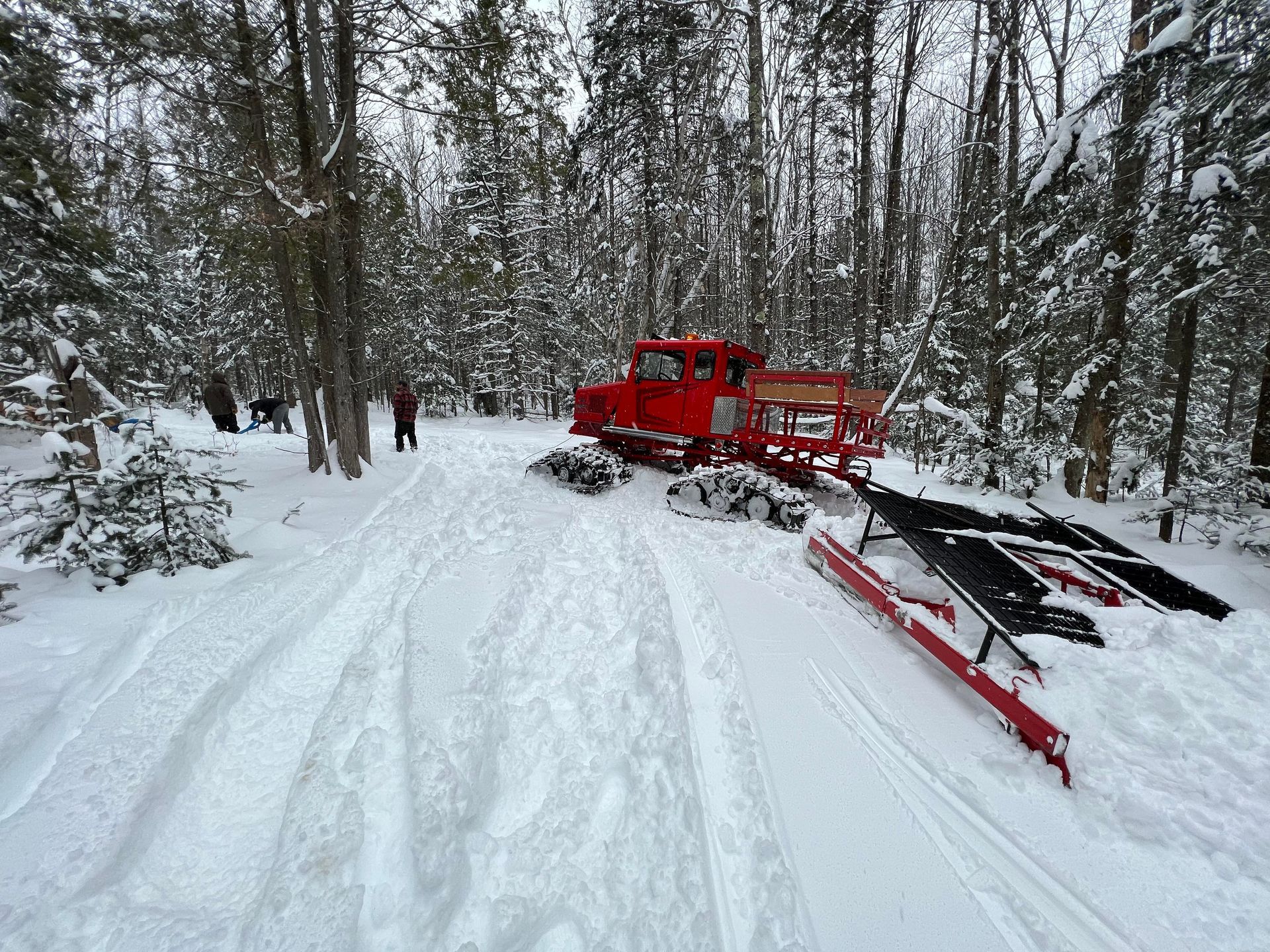BLOG
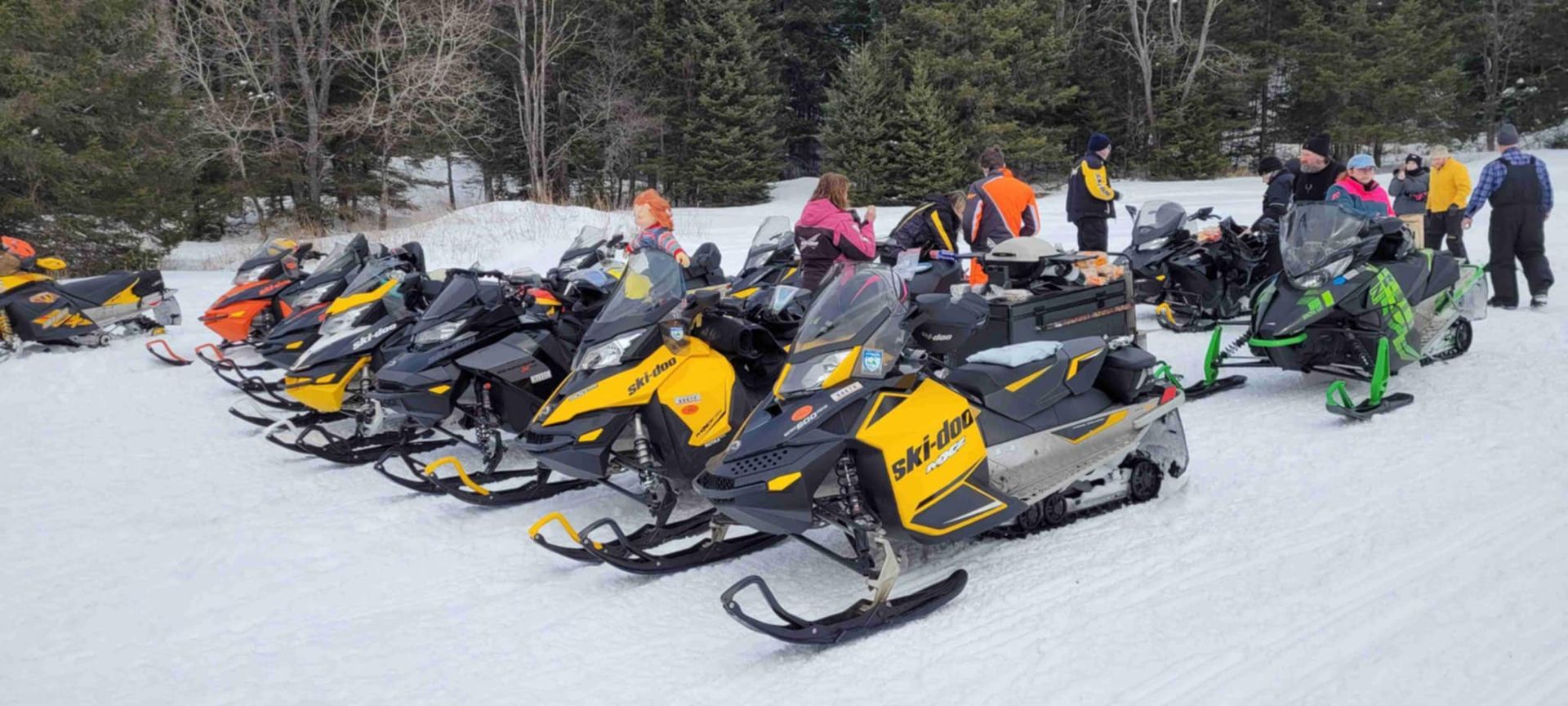
A Small Town in the Northeast The small town of Frosthaven is nestled in a valley surrounded by towering pines and snow-capped peaks. Winters are long, cold, and breathtakingly beautiful. For decades, snowmobiling had been a cherished tradition, a way to traverse the vast, snow-blanketed wilderness. However, no snowmobile clubs existed in this version of Frosthaven’s history. It wasn’t that snowmobiles didn’t exist—locals and tourists still used them. But without clubs to organize trails, advocate for rights, or foster camaraderie, the sport was an entirely different experience. Chaos on the Trails Bob strapped his helmet and prepared to ride his snowmobile through Pinetree Pass. He loved the ride's thrill, the engine's roar, and the quiet that followed when he stopped to take in the view. Yet, every trip was fraught with uncertainty. Without designated trails maintained by clubs, riders forged their own paths. Some riders crossed private property, angering landowners. Others ventured into environmentally sensitive areas, damaging the ecosystem. Bob had heard horror stories of snowmobilers getting lost in treacherous terrain without clear signage to guide them. As he revved his engine, he worried about another issue: the rivalry between riders. Snowmobiling had become competitive and territorial without a club to mediate disputes or encourage a sense of community. He had recently been shouted at for "stealing" a trail someone claimed as their own, even though it was just an open stretch of forest. “I wish there were some rules and regulations around here,” he muttered as he sped off into the wilderness with doubt and uncertainty. A Fading Tradition Miles away, Tim sat on his porch, gazing wistfully at the untouched snow draping the fields. He was in his seventies now, and his body didn’t allow him to ride like he used to. In his youth, he’d gather with friends after a day on the trails, warming up with a hot “adult” beverage at the local lodge and swapping stories of their adventures. Now, snowmobiling felt lonely. There were no clubs to organize meetups, no charity rides to unite the community, and no lodge gatherings to share tales of near misses and scenic views. The sport had become individualistic, with riders often going solo or sticking to tight-knit friend groups. Tim sighed. “Kids these days don’t know what they’re missing,” he told himself. A Community Fractured The lack of clubs also meant a lack of advocacy. When a proposed law threatened to ban snowmobiling near Frosthaven’s largest lake, there was no unified group to push back. Riders tried to fight it independently, but without organization, their voices were drowned out by environmental lobbyists. “It’s not fair,” Bob said at a town hall meeting. “We’re not all reckless! Most of us respect the land and follow the rules.” “But who enforces those rules?” a council member asked. “Snowmobiling has become too chaotic. Without proper oversight, it’s harming Frosthaven’s environment and reputation.” The council voted to restrict snowmobile access to large parts of the region. Riders were devastated. A Vision for the Future Bob couldn’t stop thinking about how fragmented the snowmobiling community had become. What if things could change? One evening, he sat with Tim, listening to his stories of the “golden days.” “Why don’t we start a group?” he asked. Tim raised an eyebrow. “A club?” “Exactly! We could map out trails, work with the town council, and even host events. It might take time, but it could bring people together, and get the youth more involved since we old-timers are aging out.” Tim’s face lit up. “I like the sound of that. It won’t be easy, though. You’ll need to rally the riders, convince the landowners, and build trust with the council.” “I’m ready to try,” Bob said with determination. The First Frosthaven Snowmobile Club Bob’s idea sparked something in the town. Slowly, he and Tim gathered supporters. They hosted meetings in Bob’s barn, inviting anyone with a snowmobile and a passion for the sport. They reached out to landowners, promising to create and enforce responsible trails. After a year of effort, the Frosthaven Snowmobile Club was born. The club organized trail cleanups, negotiated access to private land, and marked safe routes through the mountains. It even planned the town’s first snowmobile rally, bringing riders together for fun and camaraderie. Snowmobiling in Frosthaven was transformed. What had once been chaotic and isolating became a vibrant, united community. The club preserved the sport, involved the youth, and fostered a sense of belonging and purpose. Moral of the Story Snowmobiling would still exist without snowmobile clubs and associations, but it would lack the structure, safety, and sense of community that makes it so viable and special.
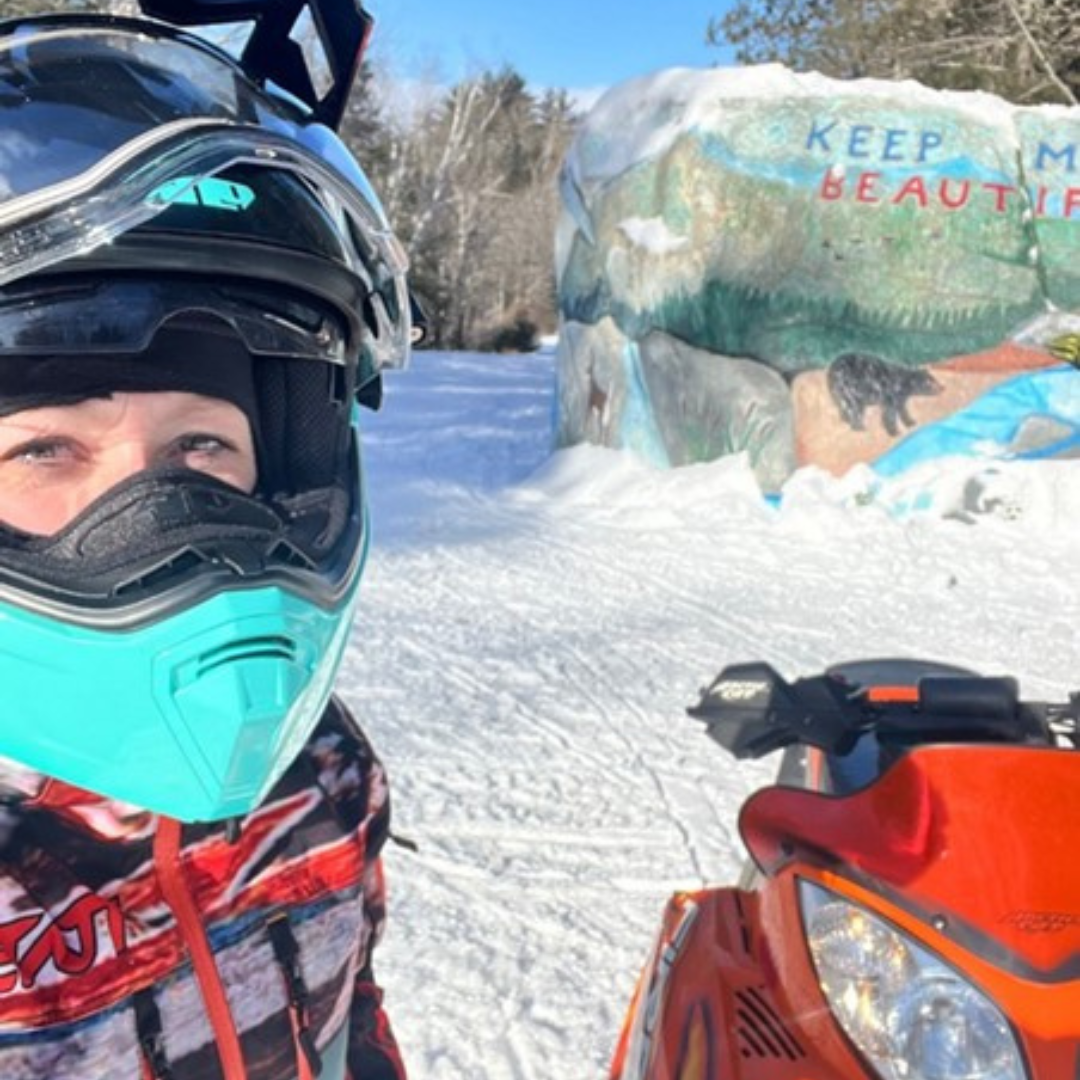
Introduction: If you asked Amanda Page what her true passions are, she would probably say family, friends, her dog Brock, her two horses, trucks, and a long list of outdoor activities. When I first met Amanda, a Registered Maine Guide, I could tell almost immediately that she was passionate about life. She is very kind, has a great sense of humor, and is personable and genuine. Before we even hit the trail on our hike up Haystack Mountain in Liberty, Maine, I felt very comfortable with Amanda, as if I had known her for a long time. I was doubly impressed with how prepared she was for our impending hike. Even though it was a shorter hike than most, she was outfitted with everything necessary in case we encountered any issues. She was very knowledgeable about the area, and when the walking path suddenly veered in a different direction than what she remembered, she knew which turn to make. Her confidence made me feel at ease. Haystack Mountain Hike & Shop Talk: It was a gorgeous day on top of Haystack. It was breezy and clear, and the temperature was in the 70s with blue skies. We dropped our backpacks and took in the panoramic view of Waldo County. We took pictures and video clips and naturally talked about snowmobiling. Amanda is an avid snowmobiler and is familiar with the Maine Highlands region. She frequently trailers north to the Shin Pond —Mt. Chase area and also enjoys riding out of Medway and East Millinocket/Millinocket. She explained that when she’s not in Shin Pond, she typically leaves from East Branch Snow Rovers Club in Medway as it is closer to home, but going from the large parking lot across the road from Northern Timber Cruisers is an excellent option for those who would like to cut off a few extra miles on the sleds and be closer to the Baxter Park loop and New England Outdoor Center , a.k.a. NEOC. When the snow is optimal during the winter, she always enjoys a great trail ride. She also loves catching views of Mount Katahdin, which she hikes from springtime through fall. In fact, Katahdin is one of her go-to hikes when guiding clients. Matagamon Wilderness is a favorite stop in the region for great food, fuel, and hospitality. She loves their baked goods, delicious burgers, and homemade bread, which she thinks adds a special touch. Amanda's new venture: I enjoyed learning about one of Amanda's new ventures, off-trail snowmobile riding. Her first off-trail riding experience was in the winter of 2022/23, held at Dean's Den in New Canada, Maine. This establishment has a great facility, and the people who own it are top-notch. They will connect you with a guide and rentals if needed during your stay. She snagged a spot at an all-woman clinic held by Let 'Er Rip LLC , hosted by the lodge. The entire group ate meals there, packed lunches for the trail, and had a great time. She plans on going back every year for Ladies Clinic weekend! The most important advice she can offer when taking part in off-trail riding is to hire a knowledgeable guide and have written permission from the landowners to access any land you'll be riding on, including the parking location and trailhead. Hick Chick Maine Adventures - Services/Website/Social Media: Amanda currently offers many outdoor adventures and will soon add snowmobile-guided tours. One of her goals for the 2024/25 sled season is to lead a three to four-day backpacking loop trip where riders carry their clothes on their backs to different locations throughout Northern Maine. Stay tuned! Her website has lots of information and exciting blog posts about her favorite locations and adventures. In her own words, "I believe you must bring your whole self to the table if you want to thrive in today's crazy world: your personality, your sense of humor, and most importantly, your heart. All of these elements brought me to found Hick Chick Maine Adventures. I invite you to explore my site, learn about my passions, and explore what excites and interests you". Final thoughts: In conclusion, I feel lucky to have met Amanda. I look forward to recommending her services, as she is an excellent choice for any Maine-guided hiking or snowmobile adventure! Website: https://www.hcmaineadventures.com/ Facebook : https://www.facebook.com/hick.chick.me/ Instagram: https://www.instagram.com/hick.chick.me/

Guiding Light in Outdoor Exploration At North Star Adventures, you'll find a special place where outdoor fun meets personal growth. Nancy, an experienced Maine Guide and nature enthusiast, offers a wide range of tailored programs throughout the year in the great outdoors. Her trips in Maine and beyond are about exploring, personal development, thinking outside the box, and feeling deeply connected to nature. Winter Adventures: when you're not on your sled Maine is a year-round playground, and Nancy's winter adventures are just as exhilarating as her summer trips. From snowshoeing through snow-covered forests to cross-country skiing across frozen lakes, Nancy's winter expeditions offer a unique way to experience the season's beauty. Participants learn essential winter survival skills and enjoy the peaceful solitude that only a winter landscape can provide. The crisp air and stunning winter scenery make these adventures genuinely unforgettable. Women's Adventures: Promoting Empowerment Nancy's inclusive and accessible approach invites women of all backgrounds, abilities, and experience levels to embark on unforgettable outdoor journeys. Whether you're a seasoned adventurer or just beginning to explore nature's wonders, many programs are designed to empower women. It's all about celebrating the strength and resilience of women in the outdoors and letting nature serve as the backdrop for your personal growth and empowerment. Map & Compass: because you never know when you'll need backup The Compass, an ancient tool from 206 BC, remains as relevant today as ever. It is the simplest form of navigation equipment, needing neither batteries nor satellites. Despite its simplicity, it can be daunting to use. Following a basic map and compass tutorial, Nancy and her team can orchestrate a treasure hunt, encouraging group collaboration toward a common goal. This program is a full-day activity and can seamlessly integrate with other pursuits during a multi-day excursion. Encouraging Snowmobilers to learn SOLO Wilderness First Aid Nancy offers several tailored programs and outdoor experiences that meet individual needs. However, she is passionate about outdoor safety and understands the importance of first aid preparedness, particularly in snowmobiling. Although Nancy is not a snowmobile rider, she understands the inherent risk of accidents accompanying the exhilarating rush of speeding through any snowmobile trail. She believes SOLO Wilderness First Aid Class is crucial for anyone venturing into remote settings. Embarking on outdoor adventures is exhilarating, but being equipped with the skills to handle emergencies is essential. That's where SOLO Wilderness First Aid comes in—a comprehensive course designed to empower outdoor enthusiasts with the knowledge and confidence to manage medical emergencies. At its core, SOLO Wilderness First Aid goes beyond traditional first aid training. It delves into the unique challenges and considerations of providing care in wilderness environments, where access to professional medical assistance may be limited or delayed. Whether hiking through rugged terrain, camping in remote wilderness areas, or exploring snow-covered trails on a snowmobile, this course equips you with the essential skills to respond effectively to various medical situations. Led by experienced instructors, SOLO Wilderness First Aid combines classroom instruction with hands-on practice, ensuring that participants gain practical experience in applying first aid techniques. The course covers a comprehensive range of topics specifically for outdoor scenarios, from assessing and stabilizing injuries to managing environmental emergencies such as hypothermia or heat exhaustion. One of the most valuable aspects of SOLO Wilderness First Aid is its emphasis on improvisation and resourcefulness. Creativity and adaptability are crucial to overcoming challenges and providing adequate care in remote wilderness settings. Participants learn to think independently and make informed decisions in high-pressure situations through scenario-based simulations and real-life anecdotes. Whether you're an avid hiker, camper, paddler, or snowmobiler, investing in SOLO Wilderness First Aid is a decision that can enhance your outdoor experiences and potentially save lives. By gaining the skills and confidence to manage emergencies in the wilderness, you can embark on adventures with greater peace of mind, knowing you're prepared to handle whatever challenges nature throws. Wildlife Observation: Learning from Nature Nancy's passion for wildlife conservation is a central theme in her adventures. Her trips often include opportunities for wildlife observation, where participants can learn about the animals and plants that inhabit Maine. Whether it's watching a family of beavers at work, spotting a majestic moose, or listening to the calls of birds, these experiences foster a sense of wonder and respect for the natural world. Nancy also emphasizes the importance of conservation, teaching participants how to minimize their impact and protect the environments they explore. Outdoor Certification and Skills Classes Nancy and her seasoned guides are excited to help elevate your outdoor skills. Whether you want to acquire new abilities, refine existing ones, or obtain an outdoor certification, she offers a fun and inclusive environment that fosters community, laughter, and learning. Conclusion North Star Adventures with Nancy Zane are more than just outdoor excursions; they are transformation journeys. Through her expert guidance and passion for nature, Nancy inspires participants to grow personally, become more self-aware, and unleash creativity. Visit her website and follow her on social media to learn more about upcoming trips and how you can join the adventure. Happy exploring, and always think safely! www.northstaradventures.me
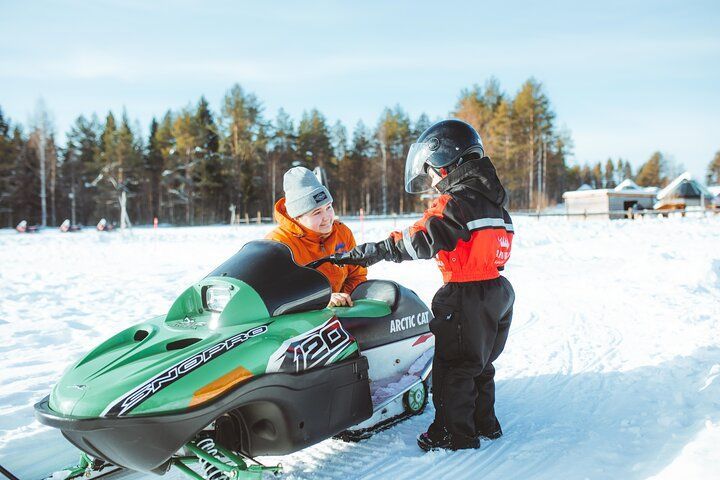
Introduction: With its rush of speed and adventure, snowmobiling has long been a beloved winter activity for enthusiasts worldwide. Yet, as demographics shift and interests evolve, there's a need to ensure the sport's vitality by engaging the next generation. This blog will explore strategies for getting youth involved in snowmobiling, club participation, fostering a love for the great outdoors, and creating lasting memories. The Allure of Snowmobiling: Before we explore strategies, it's essential to grasp why snowmobiling captivates enthusiasts. Beyond the heart-pounding speeds and awe-inspiring landscapes, snowmobiling offers a one-of-a-kind sense of freedom and camaraderie. It's a chance to venture into vast expanses of different regions, form bonds with fellow riders, and escape the daily grind. By tapping into these aspects, we can effectively introduce young people to the joys of snowmobiling. Family and Community Involvement: Snowmobiling is more than just a sport; it's a bond that brings families and communities together. Encouraging parents to include their children in outings fosters a sense of togetherness and creates treasured memories. Moreover, community events, like snowmobile rallies, charity rides, and youth-oriented programs, allow young riders to connect with peers who share their passion. By nurturing these connections, we can build a supportive network that sustains interest in snowmobiling for generations to come. Creative ways to get youths involved in snowmobile club activities: Create activities geared for younger age groups: Develop programs and activities specifically tailored to the interests and preferences of young riders. These activities could include youth-oriented rides, skills workshops, social events, and educational sessions. By catering to their needs and aspirations, you can make club activities more appealing to the younger crowd. Offer mentorship opportunities: Pair seasoned riders with younger members to serve as mentors and guides. Mentorship programs offer invaluable learning experiences and foster intergenerational bonds. Encourage mentors to share their wisdom, provide guidance, and support young riders as they embark on their snowmobiling journey. This mentorship can inspire and guide the next generation of snowmobilers. Promote youth membership incentives: Consider organizing group outings or rides specifically for youths, allowing them to experience snowmobiling in a supportive and inclusive environment. By making club activities accessible and welcoming, you can attract diverse young participants. Emphasize Safety and Education: Provide safety courses and workshops. Ensure that young participants understand the importance of responsible riding practices, trail etiquette, and environmental stewardship. Ensure they know and understand the privilege of riding on private land. Teach the importance of respecting landowners as well as wildlife. Utilize Social Media and Technology: Leverage social media platforms and digital tools to connect with youths and promote club activities. Create engaging content, share photos and videos from club events, and encourage members to share their experiences online. Organize Youth-Focused Events: Host special events and competitions for youths, such as races, scavenger hunts, or skills challenges. These events provide opportunities for young riders to showcase their abilities, build confidence, and connect with peers who share their passion for snowmobiling. Offer prizes and incentives to encourage participation and make the events memorable experiences. Collaborate with Schools and Community Organizations: Partner with local schools, youth groups, and community organizations to promote snowmobiling and club activities. Offer presentations or workshops at schools to introduce students to the sport and educate them about safety practices. Collaborate with youth organizations to organize joint events or outings that expose young participants to snowmobiling. Encourage Family Involvement: Recognize the importance of family support in fostering youths' interest in snowmobiling. Encourage parents to participate in club activities with their children and create a family-friendly atmosphere at events. Organize trail work days and outings in the off-season, allowing families to bond and create lasting memories when they are not on their sleds. Embrace Innovation: In today's digital age, integrating technology and innovation into snowmobiling can capture the interest of tech-savvy youth. From GPS-enabled navigation systems to mobile apps that track trail conditions and weather forecasts, embracing technological advancements enhances the snowmobiling experience while appealing to younger generations. Virtual reality simulations and interactive online platforms can also offer immersive introductions to the sport, enticing youth to venture onto the snow. Conclusion: Engaging youth in snowmobiling is vital for the sport's future and an opportunity to cultivate a lifelong love for adventure and the outdoors. By prioritizing education, safety, community involvement, accessibility, youth-oriented initiatives, and technological innovation, we can inspire the next generation of snowmobilers.
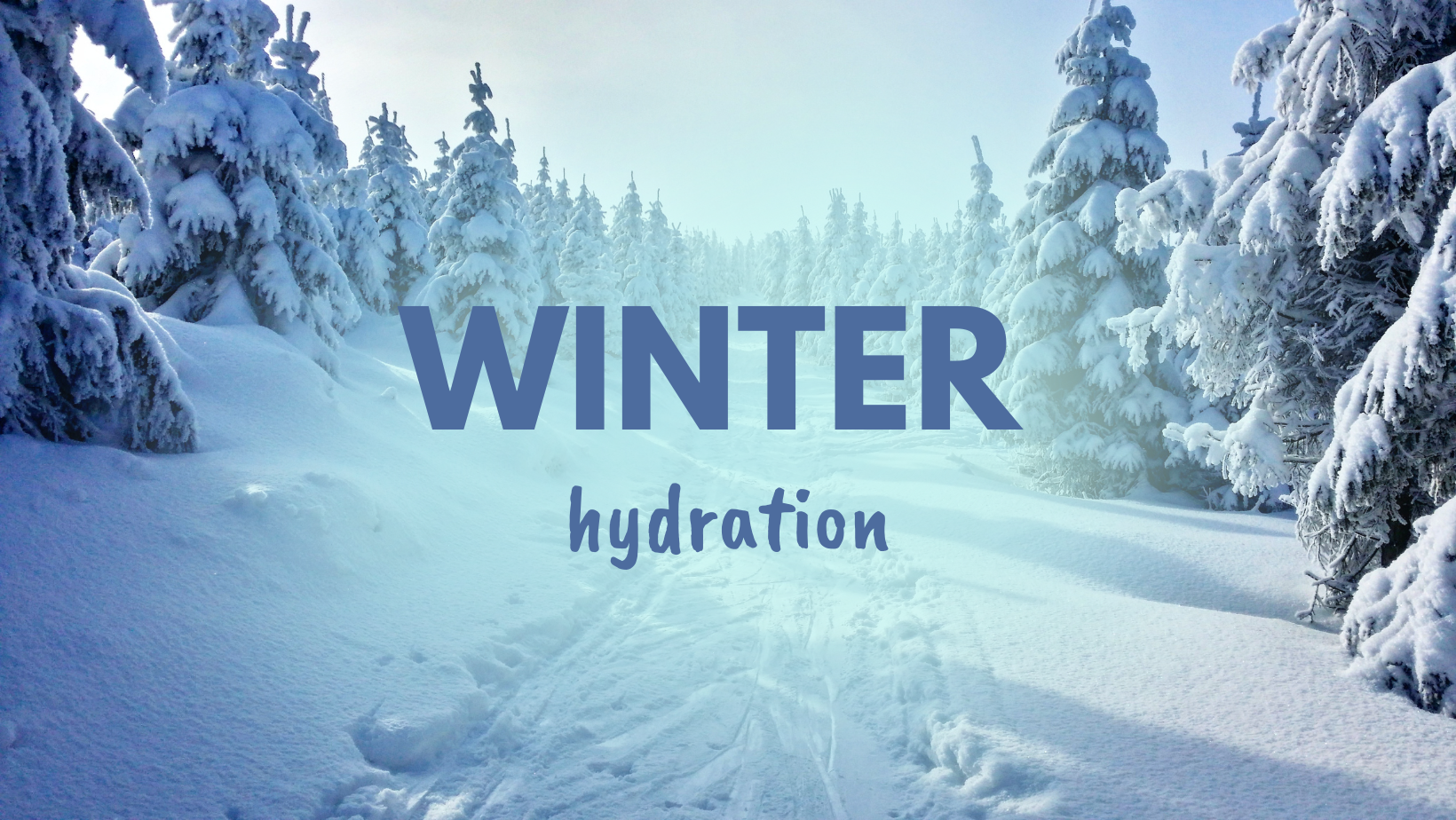
Staying well-hydrated is essential for well-being and feeling alert and energetic on the trails. Keeping your body hydrated in any climate or temperature can be challenging, but when temperatures decrease, we may not feel as thirsty, which can often lead to dehydration. Dehydration occurs when the body lacks sufficient fluids to function correctly and maintain high energy levels. Regardless of outside temperatures, staying hydrated throughout the year is crucial. The body's response to cold weather and why staying hydrated is essential: When the body sweats, urinates, or defecates, it results in water loss. Recognizing sweating in colder weather can be challenging, so remaining aware is vital while bundled up in your snowmobile gear. Even if you typically don't sweat, water loss through the skin can still occur, and dry indoor heating can lead to dehydration without you noticing. Dry air can increase a human's breathing rate, along with the loss of humidity, resulting in respiratory water loss. Higher altitudes can also magnify these losses. Insufficient water intake not only leads to dehydration but also amplifies the risk of health issues such as kidney stones, urinary tract infections, and constipation. Up to 70% of the human body is water, which regulates everyday bodily functions. Water is essential for transporting nutrients, eliminating waste, supporting the immune system, hydrating tissues and organs, maintaining blood pressure, and regulating body temperature, crucial for preventing hypothermia during winter outdoor activities. Signs of dehydration: The first and obvious sign of dehydration is feeling thirsty. Other indicators include dark-colored urine, constipation, dry mouth, chapped lips and skin, headaches, difficulty concentrating, irritability, dizziness, and a rapid heart rate. Infants and older people are particularly vulnerable to dehydration. Seeking immediate medical attention is necessary if you experience decreased urine output, a fever between 101-103°F, or diarrhea lasting more than two days, as these are signs of severe dehydration. How much water is sufficient? Determining necessary water intake depends on the individual. Various factors should be considered, such as age, sex, activity level, altitude, weather, and overall health. A primary method to calculate minimum fluid requirements is to halve one's weight in pounds; for example, a person weighing 150 pounds should aim for at least 75 fluid ounces daily. To simplify, most men should maintain a regular intake of about 15 cups per day, and women should try and maintain an intake of around 11 cups per day. More is required for recreational and outdoor activities. While most people can maintain proper hydration with sufficient daily water intake, those experiencing heavy sweating, prolonged exercise, or significant fluid loss from fever may require sports drinks or electrolyte replenishment . Electrolytes and extra sodium are essential in staying hydrated when participating in more rigorous activities such as snowmobiling. The relief factor: At times, it can be inconvenient when nature calls while riding. If you are an avid snowmobiler, you already know this. It seems counterintuitive to work on staying hydrated when you need to keep using the woods as a pit stop. Below are some recommended tips on hydrating before and after you hit the trails so that trailside stops may be less frequent. It’s good practice to be mindful and respectful of fellow riders by jumping off the trail if you cannot make it to a public facility. Female nature enthusiasts find funnel devices easy and convenient for unplanned pitstops. There are various brands on the market today from which to choose. Hydrating tips: Start hydrating for several days before riding; at least 2 or 3 liters daily for a week. The "camel-ing up" method preps the body and helps hydrate your organs and veins. Continue water intake before and especially after each ride. Warm fluids like herbal teas or broths should be considered if plain water is unappealing. Flavor plain water with lemon and lime. Other fruits and unsweetened flavor packs are also good options. Electrolyte packets and beverages, such as coconut water , can be added to plain water or purchased for individual consumption. Sip from a portable water bottle throughout the day to encourage hydration. Water-rich foods can amplify hydration. Suggestions include leafy green vegetables, citrus fruits, melons, tomatoes, cucumbers, and homemade soups. Limit caffeine intake. Too much caffeine can contribute to dehydration. To prevent dehydration, consume an equal volume of water per caffeinated drink. Alcoholic beverages can quickly lead to dehydration and the risk of hypothermia. Try replacing alcohol with mocktails while stopping food/drink along the trail system. Ride responsibly! It's never a good idea to consume alcohol and operate a snowmobile. Establish a hydration routine, starting with a glass of water by your bedside and aiming to drink a certain amount throughout the day. Implementing these strategies and prioritizing water intake can help you maintain hydration and overall health during winter.
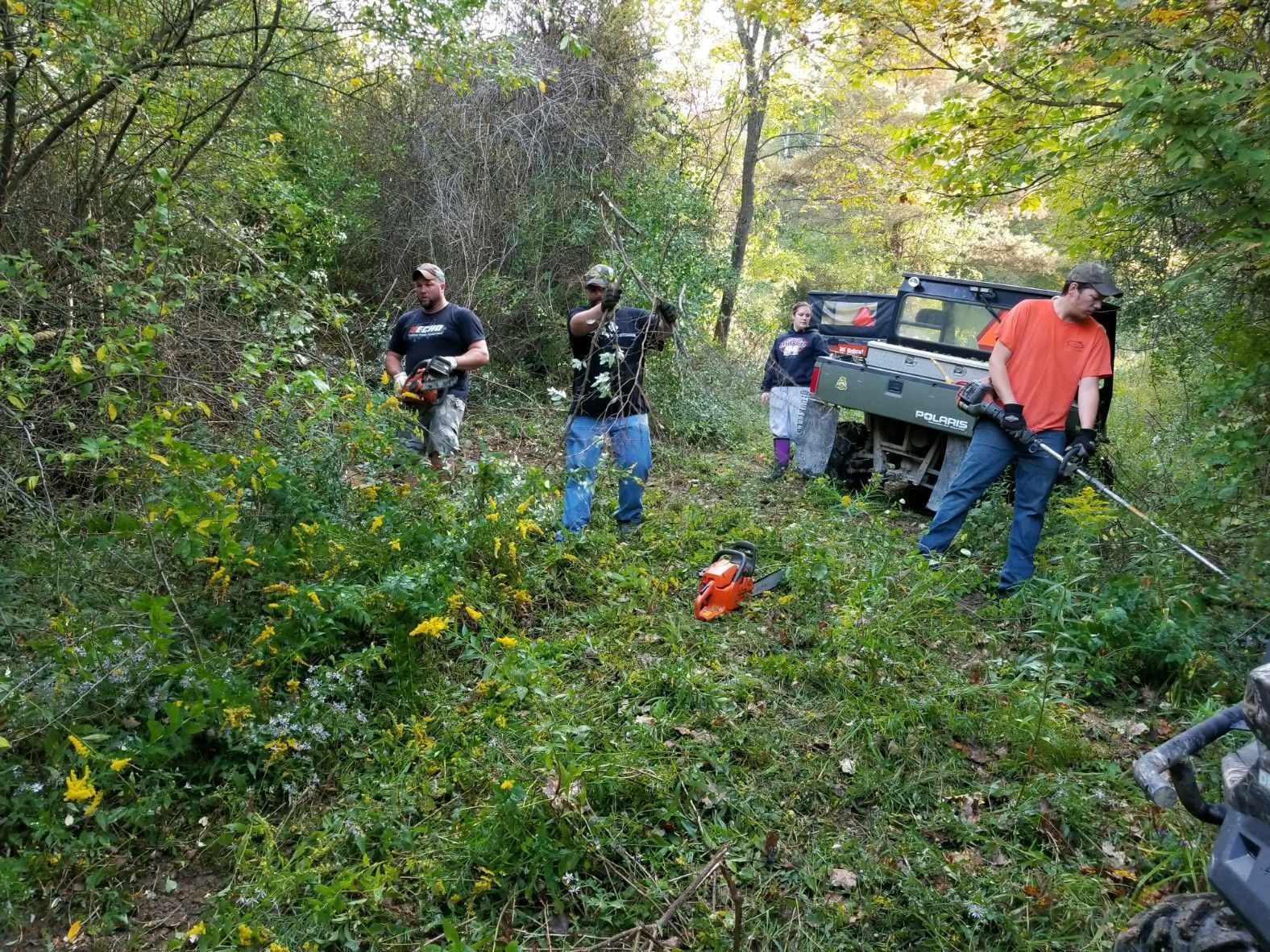
While you stow away your gear and snowmobiles for the off-season, your snowmobile club likely has many projects needing attention this summer. Here are several ways you can contribute to your club to prepare for the upcoming winter. 1. Trail Maintenance: Before the next season begins, ensure snowmobile trails are in top condition by joining work parties, clearing brush, repairing damage, and installing permanent signage. To complete the tasks more efficiently, lend personal equipment or extra tools. 2. Firewood: If your clubhouse has an indoor fireplace or outside firepit, help gather, split, and stack firewood. 3. Grant preparation: Help your club secure additional funding by assisting with grant applications or gathering valuable information such as trail work hours and expenses. You can find additional grant programs at https://www.polaris.com/en-us/trails-application/ and https://ski-doo.brp.com/us/en/snow-pass-grant-program.html . 4. Shelter Maintenance: Participate in maintaining and repairing essential cabins or warming huts. Join building crews if your club is constructing new shelters after securing grants. 5. Equipment Maintenance: Use your skills as a welder, mechanic, or electrician to help maintain groomers and drags during the summer and ensure they are ready for the next season. 6. Digital Presence Management: Keep your club's online presence active and engaging by updating social media pages with photos from previous seasons and current events. If needed, offer assistance in cleaning up and updating the club's website. 7. Preseason Membership Drive: Support your club by participating in preseason membership drives. 8. Fundraiser events: Help organize fundraisers and swap meets to boost the club's income and promote organized snowmobiling in your region. 9. Stay informed: Contact your snowmobile club's president or committee to inquire about ways you can contribute and follow social media for upcoming work events throughout the summer. 10. Membership: Snowmobile clubs and organizations rely heavily on membership funds and donations. Join your local club and donate where you can.
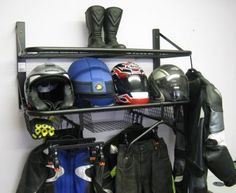
As the snowmobiling season ends, it's time to bid farewell to the winter adventures and prepare your gear for a well-deserved rest. Properly cleaning and storing your snowmobile gear is important to ensure its longevity and functionality for the next season. The basics: Before stowing it away, it's crucial to thoroughly clean it to eliminate any dirt, grime, or moisture. This proactive step plays a vital role in preventing mold and mildew development. For storing your snowmobile gear, it is essential to place it in a cool and dry environment. Prolonged exposure to moisture and heat, such as in a garage or attic, can lead to damage over time. Optimal locations for storage include a cool, dry basement or closet. Organizing your snowmobile gear by hanging it on hangers is an excellent method to maintain order and prevent wrinkles. Utilize hangers for your jackets, pants, and gloves, and neatly store them in a closet or wardrobe. Specific items: Helmet: Your helmet is one of the most critical pieces of snowmobiling gear, and it's essential to store it properly to keep it in good condition. A damp cloth and mild soap are recommended to wipe the helmet's exterior and remove dirt. Check if the interior liner is removable and washable, and follow the manufacturer's cleaning instructions. Finding a dry and cool location to store your helmet away from extreme temperatures is best. It's always a good idea to store your helmet in a quality helmet bag to protect it from dust and scratches. Maintaining the clarity of goggles and face shields is equally essential. Cleaning the lenses with a lens-cleaning solution or a microfiber cloth prevents scratches. Ensure their protection by storing them in a dedicated bag or case to avoid any potential damage. Smaller items: If you have smaller snowmobile gear items such as goggles, balaclavas, and neck warmers, use a gear bag to keep them organized and in one place. This process will make it easier to find everything you need when it's time to hit the trails again. Clothing & Gloves: Check care labels for specific washing instructions on snowmobile suits and base layers. Some items may be machine washable. After washing, ensure thorough drying before storing. You may want to hang clothing to prevent wrinkles and damage and store them in a cool, dry location. To clean your gloves or mitts, it is advisable to hand wash them using a gentle detergent in warm water. Carefully squeeze the gloves from fingertips to wrist to eliminate excess water without twisting. When drying, hang them with the fingers facing upwards. Avoid using a washing machine, tumble dryer, or any form of chlorine bleach, as these methods can compromise the integrity and quality of the gloves. Stick to the recommended hand-washing process to ensure your gloves' longevity and optimal performance. Boots: To ensure your boots' longevity and performance, following a few critical steps before storing them is essential. Firstly, brush off any excess debris and dirt from the exterior. This helps prevent the accumulation of moisture, which could damage the material over time. Secondly, if your boots have removable liners, take the time to remove them for thorough cleaning. This not only maintains the freshness of the liners but also ensures a more hygienic environment inside the boots. Lastly, double-check that the boots' exterior and interior are completely dry before storing them in a cool, dry place. Moisture left in the boots can lead to mold growth and deterioration, so a thorough drying process is crucial for preserving the quality of your footwear. Following these steps will contribute to your boots' overall care and longevity, keeping them in top condition for future use. Body Armor: Avoid machine washing or dry cleaning if you use body armor such as TekVest . The safest method is handwashing, using mild soap products. You can use a shower wand to spray-clean the vest and allow it to air dry. Most models are made from 100% synthetic materials such as polyester, nylon, and other durable fibers. You can wipe down the plastic pieces with Isopropyl alcohol. Note: A gentle detergent is usually a hand dishwashing soap that exclusively comprises surfactants capable of dissolving dirt and grease, in contrast to a soap with builders, which falls into the category of moderately strong detergents. Well-known "mild" detergent brands include Joy, Ivory, Dawn, and environmentally friendly choices such as Seventh Generation, Ecover, and Dishmate. Inspecting all your gear: Like your snowmobile, regular inspections and maintenance of your safety gear are essential to identify any wear and tear compromising safety. Safety Compromised: Regular inspections help identify damage or issues that could compromise your safety. Neglecting inspections may lead to overlooked damage or wear, compromising the safety features of the gear. Reduced Performance: Snowmobile gear, such as helmets, goggles, and gloves, contributes to your overall comfort and performance. If you don't inspect and maintain your gear, it may not function optimally, affecting your ability to ride comfortably and safely. Increased Wear and Tear: Regular use, exposure to the elements, and the rigors of snowmobiling can cause wear and tear on gear. With inspections, you may see signs of deterioration, leading to accelerated damage and potentially rendering the gear unusable. Unexpected Failures: Over time, gear may develop issues that are not immediately apparent. Without regular inspections, you might discover problems only when they lead to unexpected failures, such as a malfunctioning jacket zipper or a broken helmet strap while out on the trail. Uncomfortable Riding Experience: Damaged or ill-fitting gear can result in discomfort during rides, affecting your overall enjoyment of the snowmobiling experience. Annual inspections can help identify potential issues before they impact your comfort on the trail. Compromised Visibility: Gear such as goggles or visors can become scratched, fogged, or damaged over time. Failing to inspect and clean these components can impair your visibility on the trail, posing a safety risk. I neffective Insulation: Cold weather gear, including insulated jackets and pants, relies on intact insulation for warmth. Inspecting and maintaining these items is crucial to ensure they provide the necessary insulation during cold rides. These simple tips will give you peace of mind that your snowmobile gear is properly stored and ready for use when the next winter season arrives. Furthermore, properly storing your gear will also help it last longer and save you time and money in the long run.

Embark on a thrilling adventure through the frosty landscapes of Northern Maine, where snow-covered trails lead to remote rails, hidden gems, and historical relics. Join us on an exploration from Millinocket, Baxter State Park, Matagamon, and Chesuncook Boom House guided by the knowledge of Maine Guide John Moore II. This blog guides three routes with four different starting points, offering travel tips and insights for an unforgettable winter journey.


